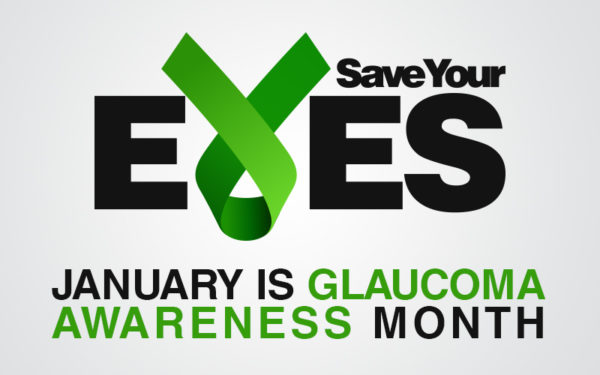
January is Glaucoma Awareness Month. Get the facts about glaucoma and schedule a comprehensive dilated eye exam with us today to protect your sight. Check out the below article from Meredith Rogers a Registered Nurse and Health Writer. Check out her website at www.GeriatricNursing.org.
The Various Options for Glaucoma Treatment
There is a disease in America that affects nearly 3 million people, yet almost half of them do not even know they have it. This “sneak thief of sight” is glaucoma, and it can cause irreversible blindness if not treated on time. As January is the Glaucoma Awareness Month , it is time to take a closer look at what can be done, if you or your loved one has been affected by this condition.
Vision loss and nerve damage resulting from glaucoma are usually irreversible; however, glaucoma is a condition that can be controlled. To treat glaucoma, the ophthalmologist may either use pills, eye drops, traditional surgery, laser surgery or a combination of these techniques.
Taking the prescribed medication regularly will play a crucial role in preventing further vision-threatening damage. It is, therefore, critical that you discuss any side effects that you get from your medication with your doctor. While all drugs do have potential side effects, it is important to realize that many people don’t experience any side-effects at all. This is why you and your ophthalmologist need to function as a team in the fight against glaucoma.
The treatment options include:
Eye Drops
Eye drops usually are absorbed into the bloodstream, and it is for this reason you need to inform the doctor about other medication that you are taking. Enquire whether if the medications you are taking can be used together because some drugs are hazardous if they are used with some medicines. Eye drops alleviate eye pressure by reducing the amount of eye fluid produced or by increasing the rate of fluid flow through the drainage angle.
Pills
At times, eye drops may not be sufficient in controlling the intraocular pressure, and you might be prescribed pills to facilitate this process. Pills typically have more systemic side effects than eye drops. They work by turning down the eye’s faucet thus reducing the production of aqueous fluid.
Surgical Methods
When drugs are not enough to achieve the desired results or have intolerable side effects, your doctor might suggest invasive procedures.
• Laser Surgery
This surgery technique is becoming increasingly widespread although its long-term success rates are variable. The process only takes 15 minutes and is painless. What happens is that a laser beam is focused upon the drain of the eye. The method aims to enable aqueous fluid to flow out of the drain more easily. This is what lowers IOP (intraocular pressure).
• Argon Laser Trabeculoplasty (ALT)
This is a procedure done for open-angle glaucoma. It utilizes a laser to treat the eye’s trabecular meshwork which increases the drainage outflow, thus reducing the IOP. In most instances, you will still need medication.
• Selective Laser Trabeculoplasty (SLT)
This technique makes use of a laser of very low energy levels. It is deemed as selective due to the fact that it leaves areas of the trabecular meshwork still intact. This makes it the safest form of laser eye surgeries.
• Laser Peripheral Iridotomy (LPI)
This is a laser procedure used in the treatment of angle-closure glaucoma. The laser makes a miniature hole in the iris which allows the fluid to discharge directly into the front part of the eye. This enables the aqueous liquid to avoid its standard route thus reducing IOP in individuals with angle-closure glaucoma.
Operating Room Surgery
There are some forms of glaucoma surgery that are done inside the operating room. This invasive procedure aims to create a new drainage outlet for the aqueous fluid to leave the eye.
• Trabeculectomy
Here, the ophthalmologist will create a tiny flap in the white of your eye. Additionally, they will also design a pocket like bubble in your conjunctiva which is known as a filtration bleb. It is typically placed under the upper eyelid where it cannot be seen. The fluid will drain into the bleb through the flap. Once in the bleb, the aqueous fluid is absorbed by the surrounding eye tissue thus lowering IOP.
• Drainage Devices
Your doctor might decide to plant a miniature drainage tube in the eye. This tube sends aqueous humor to a reservoir. The neighboring blood vessels subsequently absorb the fluid.
Successful treatment of glaucoma requires that you and your doctor work as a team. The ophthalmologist will prescribe the most appropriate glaucoma treatment for you. You have to make sure that you follow the prescription and that you use your eye drops.
In addition to taking your glaucoma medications, you will also need to visit your ophthalmologist regularly. This can be done quarterly or twice a year depending on your treatment needs. It is crucial that you consult with your ophthalmologist if you have questions regarding your treatment.


